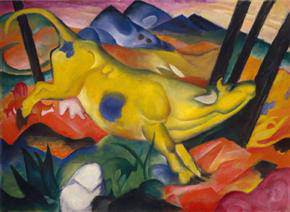
Photograph of the installation at Palazzo Vecchio, Florence at the exhibitionLa rencontre..! Venise-Florence..!, 2008
Color photograph
Courtesy Frittelli Arte Contemporanea, Florence

View of the installation Abraham- L’ami de Dieu [Philadelphia version], 2000-2006 at the exhibition Notations: Out of Words at the Philadelphia Museum of Art, 2007
Mixed mediums (including newspapers, books, records, and African sculpture), Dimensions variable
Courtesy of the artist
MUSAC presents Georges Adéagbo’s first exhibition in Spain MUSAC presents ‘The Mission and the Missionaries’, the first individual exhibition in Spain by African artist Georges Adéagbo. January 29, 2011 – June 5, 2011]]>
Source: MUSAC, Leon
The work of Adéagbo is characterized by the combination of diverse objects and texts,which he orders, collects, or finds in Cotonou and in the surrounding areas of the placeswhere he presents his exhibitions. For this reason, before inaugurating a show in a givenplace, Adéagbo needs to spend enough time there to be able to contrast his researchwith the direct experience of the conditions and circumstances of the place. Based onthis, he completes the texts and objects brought from his archive in Benin with piecesobtained from that concrete environment, turning them into specific creations that onlymake sense in that particular location
These installations are not as much about the plurality (of objects and texts) as about theproblems, complexities and negotiations related to accumulation and consumerism,translations and transformations, and relations, proximities, and displacements.Generally, a central theme connects all the elements of the “assemblage” with the waythe execution of the installation is designed, while time marks the tension between thevisual and the verbal; objects that cover walls and invade floors, involving the vertical andhorizontal in the experience of the spectator.
Adéagbo sees himself in the communitarian role of the artist as much as in the role of“missionary,” thus, the language of his contingent stories and his enigmatic enunciationsare about carefully elaborated parables, native and formative myths, and metaphysicalmetaphors. As a result of this, and through the creation of a thickly-woven, symbolic webof events, Adéagbo illustrates the universality of the laws of nature that govern lifeeverywhere, while simultaneously revealing the diversity of existing conditions in a givenplace.
In this exhibition at MUSAC, as in most cases, the installations created by Adéagboconstitute, in the words of Stephan Köhler, “an oracle and a talisman that orient us andprotect us along the courses of life,” an “orientation, analogous to a map and a compass,a mental space in which to reflect upon where we come from, where we are, and, no lessimportant, if we are on the right path to recognize and accomplish our vital mission.”
Follow us on:


